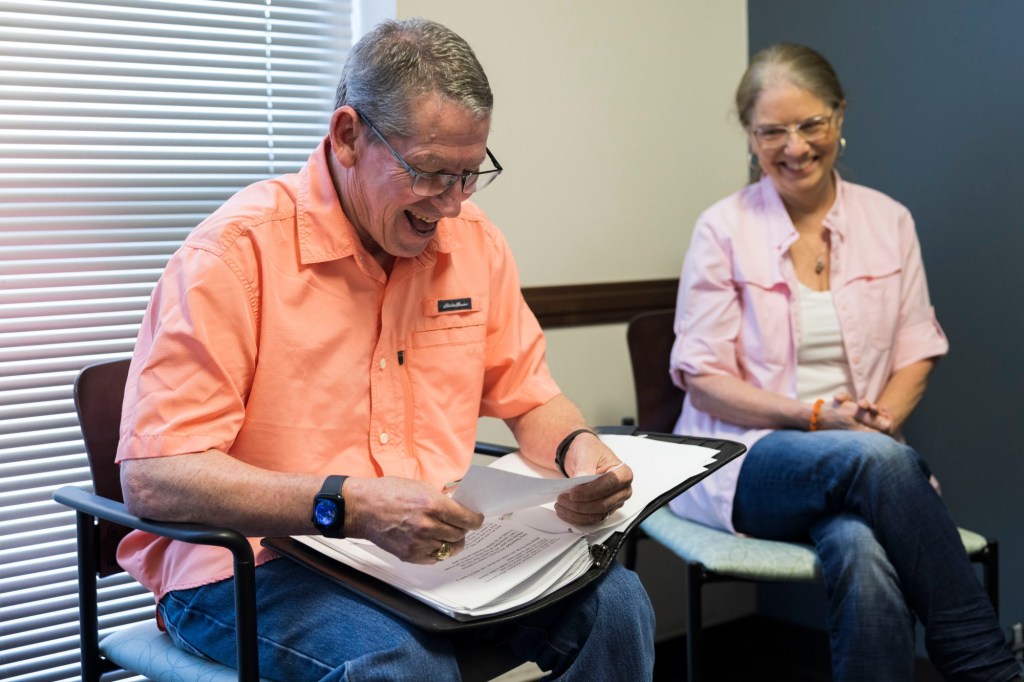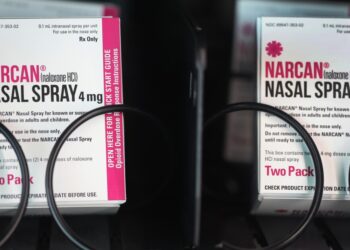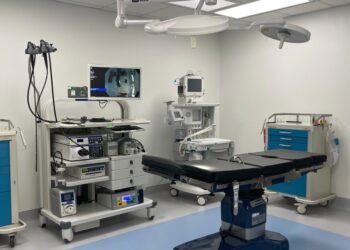Ray Hart’s vocabulary consisted of just one word after his August 2022 stroke.
“Yep” was all he could say, said Pamela Jenkins, his caregiver and partner of 24 years.
Like many survivors, Hart, 62, can understand what’s said to him almost as well as he could before the stroke, but it’s still hard for him to form complete sentences.
Now, though, a year after adding music therapy to his rehabilitation schedule, he can sing them.
“I’ve got sunshine on a cloudy day,” he sang during a recent session at Sentara Fort Norfolk Plaza, relief and pride glowing on his face as the pent-up words escaped. “What can make me feel this way? My girl!”
Jenkins urged medical professionals to consider including music therapy in their rehabilitation recommendations as a panelist in Friday’s Stroke Symposium hosted by Sentara in Williamsburg.
“That therapy, we have found, has helped him more than anything else,” she said.
Hart sees Tracy Bowdish, the only music therapist Sentara employs. Bowdish had worked with a task force to help pass music therapy licensure legislation in Virginia in 2020.
Despite its effectiveness for stroke survivors, Parkinson’s and Alzheimer’s patients and others with various types of cognitive deficit, music therapy is generally not covered by insurance, Bowdish said.
To make it accessible, Sentara takes a loss on the program and charges patients a $40 fee for each session. That amount hasn’t increased in Bowdish’s 12 years with the hospital system.
“I’m inherently skeptical by nature, so I know people look at music therapy and think it looks all fluffy,” Bowdish said.
But neurologic music therapy engages various parts of the brain, involving emotion, rhythm, memory and language, she said. When functional magnetic resonance imaging emerged, she added, practitioners thought they’d be able to find where music lives in the brain. It turned out, though, that unlike speech, which is controlled from the brain’s left hemisphere, music…
Read the full article here







